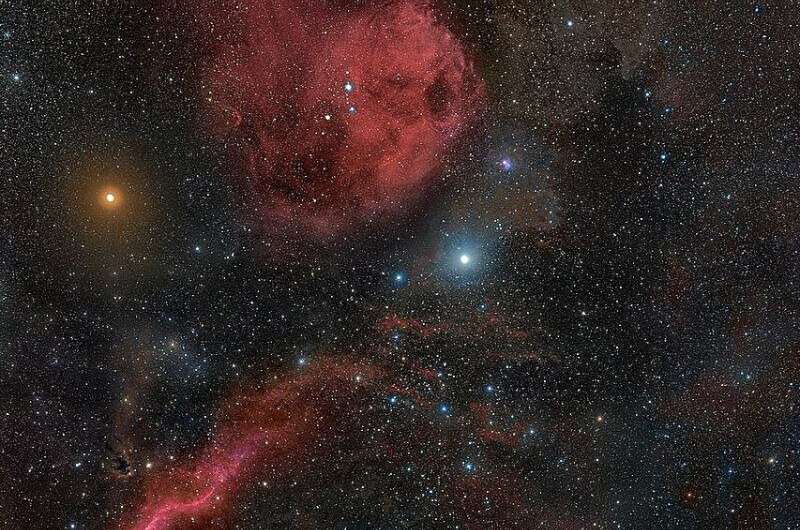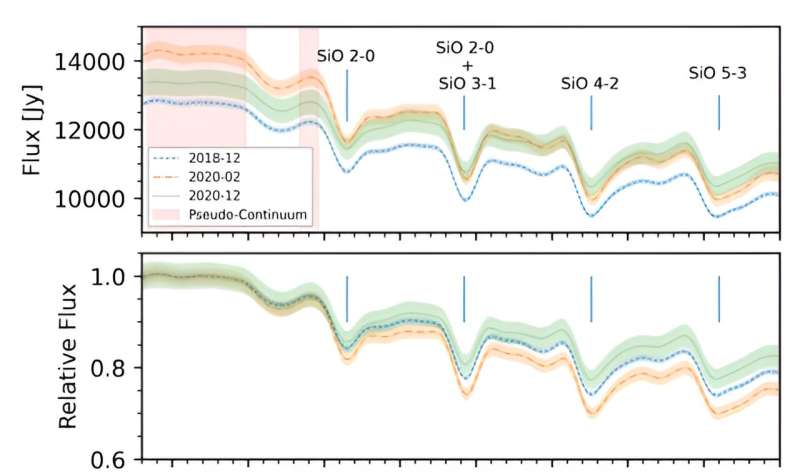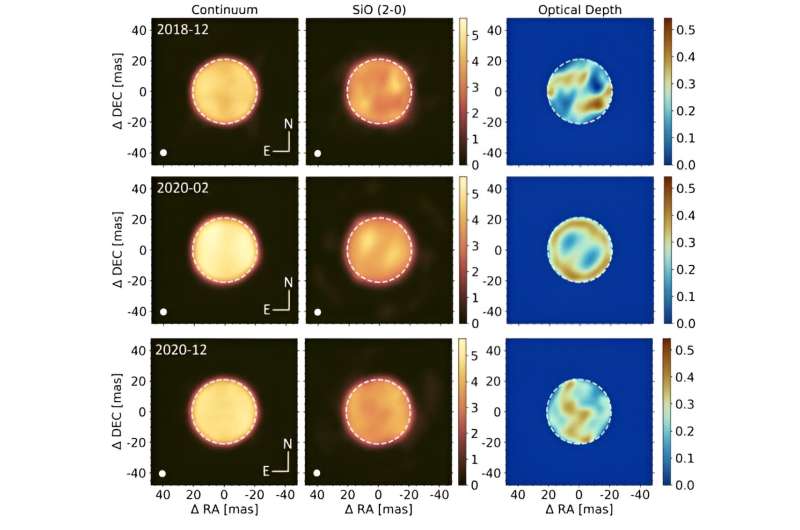Orion and the molecular cloud covering the region. Betelgeuse is the red star in the upper left. Credit : Rogelio Bernal Andreo
When a prominent star in the night sky suddenly dims, it generates a lot of interest. That's what happened with the red supergiant star Betelgeuse between November 2019 and May 2020. Betelgeuse will eventually explode as a supernova. Was the dimming a signal that the explosion was imminent?
No, and new research helps explain why.
Headline writers couldn't resist the supernova angle, even though that explanation was never very likely. Eventually, it became clear that ejected dust from the star caused the dimming. New research based on observations before, during, and after the Great Dimming Event (GDE) supports the idea that dust from the star itself caused Betelgeuse's drop in brightness.
A research letter titled "Images of Betelgeuse with VLTI/MATISSE across the Great Dimming," appearing in Monthly Notices of the Royal Astronomical Society: Letters, presents the infrared observations of Betelgeuse. The observations capture the star before, during, and after the GDE. The lead author is Julien Drevon, from the Université Côte d'Azur, France, and the European Southern University.
"To better understand the dimming event, we used mid-infrared long-baseline spectro-interferometric measurements of Betelgeuse taken with the VLTI/MATISSE instrument before (Dec. 2018), during (Feb. 2020) and after (Dec. 2020) the GDE," the research letter states. In particular, their observations focus on silicon monoxide (SiO.)
The authors of the new research outline three steps in the process that created the GDE.
This figure from the research letter shows some of the data the researchers worked with. The top panel shows the absolute spectra during each observed epoch. The bottom panel shows the relative flux for the SiO bands. The bands are deeper during the GDE than either before or after. Credit: J. Drevon et al. 2024
Step one
The GDE started with shocks deep inside Betelgeuse. They generated a convective outflow of plasma that brought material to the star's surface. Researchers detected a strong shock in February 2018 and a weaker one in January 2019. The second, weaker shock boosted the effect of the stronger shock that preceded it, generating a progressive plasma flow at the surface of Betelgeuse's photosphere.
Step two
The plasma flowing to the photosphere's surface created a hot spot. Hubble UV observations of Betelgeuse revealed the presence of a luminous, hot, dense structure in the star's southern hemisphere, between the photosphere and the chromosphere.
Step three
Stellar material detaches from the photosphere and forms a gas cloud above Betelgeuse's surface. A colder region forms under this cloud as a dark spot. Since it's cooler, dust is allowed to condense above this region and in the part of the cloud above it. That dust is what blocked some of Betelgeuse's luminosity, causing the GDE.
Previous research revealed this three-step process behind the GDE. The authors of the new research article set out to observe Betelgeuse's close circumstellar environment to probe and monitor its geometry. In the wavelength range they worked in, SiO spectral features are prominent, and they're used to understand what happened with the red supergiant. In astronomy, SiO is used as a tracer for shocked gas in stellar outflows since it persists at high temperatures.
This figure from the research article explains some of what the researchers found. The middle column is particularly interesting because it’s a reconstruction of the SiO (2-0) absorption band onto Betelgeuse’s surface for each of the three observed epochs. The third column is similar but shows the SiO (2-0) optical depth. Overall, they constrain the geometry of the dust feature that caused the GDE. Credit: J. Drevon et al. 2024
In their article, the authors focus on the SiO (2-0) band and what it signifies. They note how the band's intensity contrast increases by 14% during the GDE. "Therefore, it seems that during the GDE, we observe brighter structures in the line of sight," they explain.
Next, they note a 50% decrease in intensity contrast in December 2020. What does it mean?
More information: J Drevon et al, Images of Betelgeuse with VLTI/MATISSE across the Great Dimming, Monthly Notices of the Royal Astronomical Society: Letters (2023). DOI: 10.1093/mnrasl/slad138
Provided by Universe Today

























